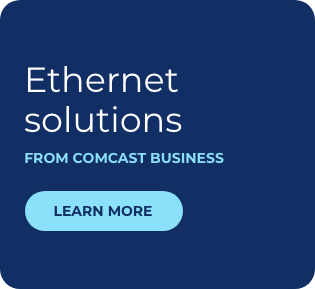Mining the Internet of Things

Still in its nascent stages, the Internet of Things is being hailed as the next evolution of the Internet and even as the next Industrial Revolution. It represents billions of sensor-driven devices connecting over WiFi and low-emission networks to each other, the Internet, national networks and distant cloud-based applications, carrying unimaginable amounts of data that can be captured and analyzed for invaluable business intelligence.
Already, many progressive-thinking businesses are capitalizing on that wealth of information to shape business strategy, streamline operations, realize new revenue streams, increase profitability and enhance customer communications. They are applying IoT-derived intelligence to:
- Drive revenue growth with faster product and services development, as data analytics provide near-instant insight on customer patterns, usage and demand
- Improve customer service through data collection that drastically reduces response times and enhances the customer experience
- Understand the state of the business with real-time insight into consumption, usage, profitability of products and services, providing multiple locations simultaneous access to critical data that enhances collaboration
- Make the entire supply chain more efficient by optimizing data intelligence to fine tune asset utilization, warehouse space and production planning
- Automate maintenance of physical assets ranging from distribution fleets, to building equipment and major IT equipment
To fully understand how the IoT is transforming enterprise operations across the nation, it’s first necessary to understand exactly what it is today, how it operates, and what’s required to capture and maximize the potential of its vast offerings.
Today’s IoT
In just a few years, the Internet has progressed from a linked repository of accessible documents to a platform for commerce and collaboration, to a connected world of smartphones, tablets and social networks. Along the way, machine to machine (M2M) topology entered the Internet ecosphere through devices designed to perform specific tasks such as monitor and relay temperature and location information from refrigeration trucks carrying food and medical supplies; track, analyze and report driver behavior to insurance companies; notify soft drink distributors that it’s time to re-supply vending machines.
Today, all of these devices are connecting with each other, with corporate data centers and cloud-based applications, with on-premise systems, with entertainment sources and just about everything – leading to the nomenclature for some as the Internet of Everything. The “things” (things equipped with sensors) are connecting over advanced WiFi networks and through low-emission technologies such as Bluetooth. Connections are routing data from local networks to Internet gateways and onto highly robust nationwide fiber and hybrid fiber coaxial (HFC) networks to their connected destination. All the way, data is being captured – vast amounts of data that can be analyzed and transformed into valuable intelligence that can be returned or routed to different device and user destinations.
While this loosely woven concept of the IoT has been emerging for a while, several factors are driving its more formalized adoption today. Businesses have begun to realize the potential of monetizing this people and machine-connected ecosystem. Sensors have become more readily available, effective and affordable. The cloud has made greater storage capacity and hundreds of applications readily available. Data analytics have progressed tremendously, including the ability to analyze data as it streams from sensors or on the edge, for faster results that avoid routing through centralized computing assets. Despite all of these advances, we still are just at the beginning. IoT frameworks, definitions and strategic plans are securing their places in some business operations, but there is still much to be sorted, defined, standardized and staffed before widespread business utilization and optimization occur.
Adopting a Standard Definition
For the purposes of this paper, we reference 451 Research’s definition of the IoT as, “the apps and systems enabling the virtualization of the physical world. This industry-wide movement is enabled and realized through the use of standalone or embedded, networked sensors and microprocessors deployed in physical objects or environments that are then connected to back-end systems and applications via a wide variety of network protocols and architectures. IoT systems create value by combining sensor capabilities with back-end and front-end systems that turn raw data into information services of value. IoT also can imply ability to control physical systems remotely or autonomously. Once connected, IoT systems capture and store data and data analytics to turn that data into actionable insight or enable value-added services not possible without Internet or equivalent connectivity.”
And the numbers of connected devices are staggering and continuing to grow.
- Gartner, Inc., forecasts that 6.4 billion connected things will be in use worldwide in 2016, up 30 percent from 2015, and will reach 20.8 billion by 2020. In 2016, 5.5 million new things will get connected every day.
- 34 billion devices will be connected to the Internet by 2020, according to Business Insider, with IoT devices accounting for 24 billion and traditional computing devices (smartphones, tablets, smart watches) comprising 10 billion
- Internet of Things spending will reach $1.7 trillion in 2020, predicts IDC
Early Adopters Capitalizing on the IoT
The implications and value of this vast connected world apply to just about every imaginable enterprise, including manufacturing, transportation, energy, financial services, retail, technology and healthcare.
Looking at one early adopting sector, an Industry Week August 2015 article states, “Manufacturing worldwide is on the cusp of a revolution. Technologies based on the Internet of Things have the potential to radically improve visibility in manufacturing to the point where each unit of production can be ‘seen’ at each step in the production process. Batch-level visibility is being replaced by unit-level visibility. This is the dawn of smart manufacturing.”
To illustrate the workings of one IoT ecosystem, consider the following example of how one medical supplier is potentially achieving life-saving just in time delivery and inventory efficiencies. This supplier of medical gases, such as oxygen, nitrogen and helium, is optimizing data from the IoT to ensure that the hospitals, clinics and nursing homes that rely on them always have adequate supplies. The data also helps the supplier drive operational efficiencies and generate new revenue streams.

Monitoring the hundreds of thousands of portable cylinders used to refill larger tanks at medical facilities across many states was a labor-intensive supply chain nightmare. Today, inexpensive sensors embedded in each cylinder monitor contents, capture fill-level and pressure data, and send critical information over wireless networks to data centers where it is used to dispatch delivery trucks as needed.
With tanks networked, real-time data is also being transmitted to cloud-based mobile applications, allowing customers to monitor their on-premise systems from anywhere, alerting them to unexpected usage or equipment irregularities before more serious problems arise.
The result is a just-in-time inventory management system that’s efficient, accurate, cost-effective, and quite possibly, life-saving.
Other IoT healthcare related implications are huge. To cite a few, wearable devices allow medical professionals and patients alike to monitor and capture health data. Infusion pumps, insulin monitors and so many more health-related devices and equipment connected with sophisticated analytics can provide enormous intelligence that’s critical to medical insight and decisions – for the patient and medical professional alike.
Transportation companies are incorporating the IoT into programs ranging from fleet management and disaster prevention, to connected cars. Embedded sensors monitor and transmit data on everything from engine performance, as-needed maintenance and logistics to maximize productive time and ensure safe delivery of often-sensitive cargo.
The oil and gas industry, which is particularly sensitive to expensive downtime in the production and refinery processes, is increasingly using sensors, networks and analytics to monitor equipment performance and predict breakdowns. The IoT is helping this sector expedite performance and keep down unnecessary costs.
Another example involves sophisticated agricultural operations, from farms to wineries that are reaping the benefits of sensors, networks and related devices. In ground sensors are monitoring soil conditions from moisture to chemical balances and providing that information to help regulate irrigation, fertilization and other treatments, increasing efficiencies and productivity – and profitability.
Probably more than any other industry, hospitality depends on connected technologies, using the IoT to personalize the guest experience and streamline operations for improved profitability. In many hotels, guests can check in using mobile devices, reducing lobby wait times, and use their smart phones as room keys. In-room sensors recognize returning guests, automatically turning on lights, adjusting window coverings and entertainment settings. Sensors monitor food and beverage inventories, place orders and even help automate vendor payments.
The Gold is In the Data
Clearly, the production, sales and services of the billions of IoT devices alone are major economic drivers. Businesses already are monetizing the data they’re gathering; entirely new businesses are being created as a part of the new IoT economy.
But, we believe the real value of the IoT – the gold standard – continues to be the data. Capturing and analyzing the vast amounts of data literally at our fingertips; realizing the business intelligence it delivers; and applying that intelligence to transformative business applications represents the real value, the gold, of the IoT. That will drive the new Internet of Things economy.
As IT executives and other enterprise leaders position their businesses to capitalize on the new opportunities and customer experiences enabled by the Internet of Things, ensuring that the right infrastructure is in place, not just for today but perhaps even more critically important, for tomorrow is imperative. That critical infrastructure needs to include:
- A reliable, scalable network that can handle the complexities of the Internet of Things at an affordable price
- Private, secure network connections and managed security services to help protect valuable data
- Nationwide coverage and direct connectivity to all major cloud service providers
- A suite of managed services to effectively allocate resources and realize benefits from new technology.
the Internet of Things is being hailed as the next evolution of the Internet and even as the next Industrial Revolution.
Locked Content
Click on the button below to get access
Unlock NowOr sign in to access all content on Comcast Business Community
Learn how Comcast Business can help
keep you ready for what's next.











